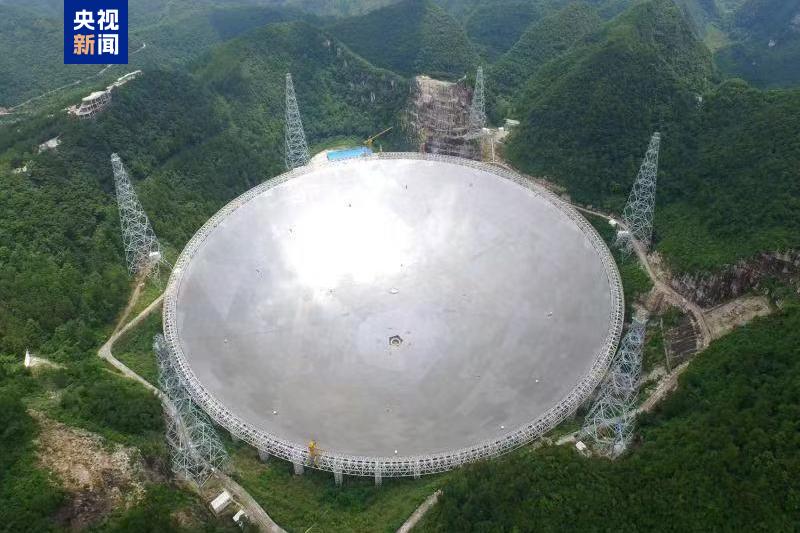As the world’s largest and most sensitive single-dish radio telescope, during the 14th Five-Year Plan period, FAST has achieved a series of major original results with international influence, enabling China’s radio astronomy research to transition from following to leading the field.
500-meter Aperture Spherical Radio Telescope
The 500-meter Aperture Spherical Radio Telescope (FAST) is the world’s largest single-dish radio telescope, located in a natural karst depression in Guizhou, China. Completed in 2016, it was built to search for celestial phenomena like pulsars and potential signs of extraterrestrial life. Its construction involved relocating over 9,000 local residents to create a necessary radio-quiet zone.
FAST
FAST, or the Five-hundred-meter Aperture Spherical radio Telescope, is a large radio telescope located in Guizhou, China. Completed in 2016, it is the world’s largest single-dish radio telescope, built in a natural karst depression. Its primary purpose is to observe pulsars, detect interstellar molecules, and search for potential signs of extraterrestrial intelligence.
China Sky Eye
The China Sky Eye, officially known as the Five-hundred-meter Aperture Spherical radio Telescope (FAST), is the world’s largest single-dish radio telescope, located in a natural karst depression in Guizhou Province. Completed in 2016, it was built to explore the universe by detecting faint radio signals from celestial objects, contributing to astronomical research, including the search for extraterrestrial life. Its construction and operation represent a significant achievement in China’s advancements in space science and technology.
National Astronomical Observatory
The National Astronomical Observatory is a premier scientific institution dedicated to astronomical research and observation. Historically, such observatories were often founded centuries ago to advance navigation and celestial study, with many now housing powerful telescopes and research facilities. They play a vital role in expanding our understanding of the universe, from planetary science to cosmology.



